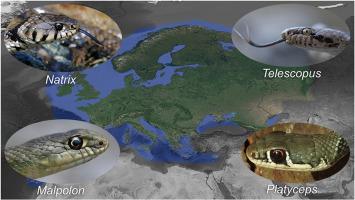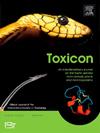欧洲非前獠蛇(NFFS)咬伤回顾。
IF 2.6
4区 医学
Q2 PHARMACOLOGY & PHARMACY
引用次数: 0
摘要
长期以来,非前獠牙蛇(NFFS)一直被蛇毒研究忽视,这可能是由于大多数非前獠牙蛇被认为与人类无医疗关系。由于有关非前獠牙蛇毒液和口腔分泌物的成分和活性的信息很少,因此很难评估特定物种是否会造成具有医疗意义的咬伤。在此,我们回顾了目前有关欧洲非致命性蛇类咬伤引起的症状/体征的信息,旨在为了解它们在蛇咬伤方面造成的威胁奠定基础。尽管大多数被考虑的类群的可用数据量总体有限,但马尔波龙属因其引起局部和全身中毒的能力(包括神经中毒症状)而引人注目。其他属的咬伤,如 Hemorrhois、Hierophis、Natrix、Platyceps、Telescopus 和 Zamenis,主要与局部症状有关,但其医疗意义的程度仍不清楚。我们的研究结果表明,虽然被欧洲虹彩蛙咬伤一般只会造成轻微影响,但不能排除某些物种可能会造成全身性影响。有鉴于此,任何被欧洲黑线蝇咬伤的患者都应接受专业的医疗评估,以确保患者的安全和适当的处理,并提供详细的文件记录,以便为该物种建立准确的医疗风险档案。本文章由计算机程序翻译,如有差异,请以英文原文为准。

A review of bites by non-front-fanged snakes (NFFS) of Europe
Non-front-fanged snakes (NFFS) have long been overlooked by snake venom research, likely due to most of them being considered non-medically relevant for humans. The paucity of information about composition and activities of NFFS venoms and oral secretions makes it difficult to assess whether a given species can inflict medically significant bites. Here, we provide a review of the information currently available about the symptoms/signs elicited by bites from European NFFS, aiming to offer a foundation for understanding the threat they pose in terms of snakebite. Despite an overall limited amount of available data for most of the considered taxa, the genus Malpolon is notable for its capacity to cause local and systemic envenoming, including neurotoxic symptoms. Bites by other genera like, Hemorrhois, Hierophis, Natrix, Platyceps, Telescopus, and Zamenis are mainly associated with local symptoms, but the extent of their medical significance remains unclear. Our findings suggest that, although bites from European NFFS generally cause only mild effects, the potential occurrence of systemic effects from some species cannot be ruled out. Considering the above, any bite by European NFFS should receive professional medical evaluation in order to ensure patient safety and appropriate management, as well as detailed documentation facilitating construction of an accurate medical risk profile for the species.
求助全文
通过发布文献求助,成功后即可免费获取论文全文。
去求助
来源期刊

Toxicon
医学-毒理学
CiteScore
4.80
自引率
10.70%
发文量
358
审稿时长
68 days
期刊介绍:
Toxicon has an open access mirror Toxicon: X, sharing the same aims and scope, editorial team, submission system and rigorous peer review. An introductory offer Toxicon: X - full waiver of the Open Access fee.
Toxicon''s "aims and scope" are to publish:
-articles containing the results of original research on problems related to toxins derived from animals, plants and microorganisms
-papers on novel findings related to the chemical, pharmacological, toxicological, and immunological properties of natural toxins
-molecular biological studies of toxins and other genes from poisonous and venomous organisms that advance understanding of the role or function of toxins
-clinical observations on poisoning and envenoming where a new therapeutic principle has been proposed or a decidedly superior clinical result has been obtained.
-material on the use of toxins as tools in studying biological processes and material on subjects related to venom and antivenom problems.
-articles on the translational application of toxins, for example as drugs and insecticides
-epidemiological studies on envenoming or poisoning, so long as they highlight a previously unrecognised medical problem or provide insight into the prevention or medical treatment of envenoming or poisoning. Retrospective surveys of hospital records, especially those lacking species identification, will not be considered for publication. Properly designed prospective community-based surveys are strongly encouraged.
-articles describing well-known activities of venoms, such as antibacterial, anticancer, and analgesic activities of arachnid venoms, without any attempt to define the mechanism of action or purify the active component, will not be considered for publication in Toxicon.
-review articles on problems related to toxinology.
To encourage the exchange of ideas, sections of the journal may be devoted to Short Communications, Letters to the Editor and activities of the affiliated societies.
 求助内容:
求助内容: 应助结果提醒方式:
应助结果提醒方式:


